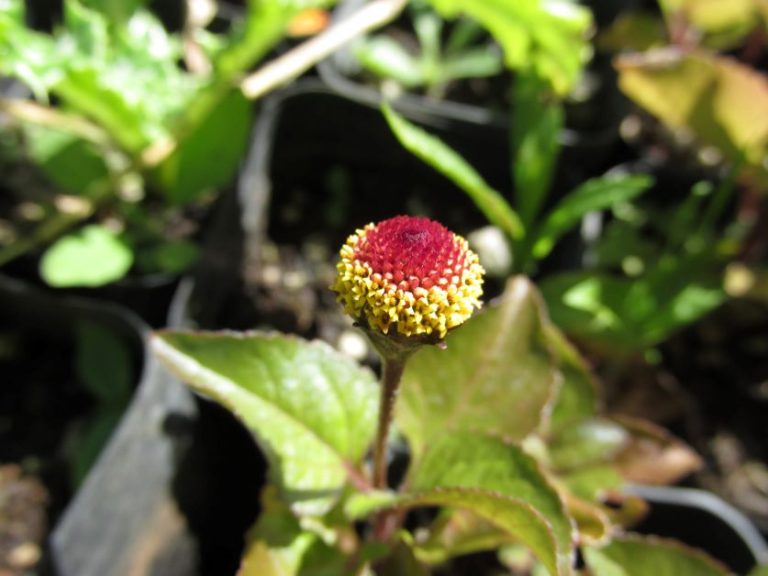Why Do My Sweet Potatoes Have Holes in Them?
I love growing sweet potatoes. They’re one of the only vegetables that grow in summer in Florida, and you can eat the greens while you wait for the potatoes to mature. I planted this year’s crop of sweet potatoes in April and like always, I grew them in a metal raised garden bed in a mixture of compost, sand, and topsoil.
After waiting 4 months, I harvested my sweet potatoes in August. Unfortunately, the bounty this year was disappointing, and not because I didn’t grow a lot of sweet potatoes — I did. The sweet potatoes I pulled, however, were full of holes. This was a new problem for me and my holey harvest sent me on a quest: what exactly was munching on my favorite summer vegetable?

Why do my sweet potatoes have holes in them?
There are a few reasons why your sweet potatoes have holes in them. Some holes are a byproduct of pests (garden centipedes, for instance), while others are due to disease or storing your potatoes wrong after you pick them. One of the most common causes of holes in potatoes are wireworms.
What are wireworms?

Wireworms are the larvae of a bug called the click beetle. Click beetles in Florida look a little like cockroaches, but they’re not related. This family of beetles (Elateridae) is unique because they produce a clicking sound when turned over on their backs. Click beetles are also known as elaters, snapping beetles, spring beetles, and skipjacks. Although these insects look creepy, they are harmless in the garden.
Unlike the adult click beetle, their larvae form ( the wireworm) is devastating. Wireworms feed on a wide variety of crops including sweet potatoes, potatoes, carrots, radishes, corn, beets, beans, cabbage, lettuce, onions, and peas. They also like to feed on seeds. If your seeds fail to germinate and you find them as hollowed-out husks, then there is a good chance that you have a wireworm infestation.
Wireworms are whitish-brown, segmented, about an inch long, and look like a thin maggot. Unlike a maggot, though, they have hard bodies that make them hard to kill. These larvae like dense, damp soil and usually live in the first 6 inches under the soil line.
Wireworm lifecycle

Part of what makes wireworms so destructive is that it can take up to 6 years to complete their life cycle, depending on species and conditions.
- A female click beetle lays as many as 100 eggs during their year-long lifespan.
- Eggs hatch over the next few days or weeks.
- Once hatched, the wireworms feed on seeds and vegetation.
- After the wireworms are done feeding (anywhere between 1 and 6 years), they turn into a pupa.
- Adult click beetles emerge from pupae next spring.
Wireworms, potatoes, and what you can do about it
Although they don’t respond well to pesticides, there are plenty of organic wireworm control methods.
Tilling
Tilling your soil will expose the wireworms to their natural enemy: birds.
- After you’ve harvested your potatoes, turn your soil with a pitchfork.
- Although wireworms usually live in the first 6 inches of soil they will burrow deeper if it’s especially hot and dry. Floridians like myself will probably find it easier to use a shovel because you’ll want to dig at least a foot down.
- Many of the wireworms should now be on the surface of the soil, where birds will enjoy them as a treat.
How to make a wireworm trap
You can make wireworm traps as a form of sweet potato pest control:
Cut a few potatoes into small chunks.

Stick a skewer into the potato pieces.
Bury the potatoes a few inches into the soil, leaving the skewer exposed.

After a few days, pull up the potatoes using the skewer as a handle. You should see wireworms feeding on the potato pieces.
Put your potato traps into a Ziploc bag and throw them away.
Beneficial nematodes
Wireworms are a food source for beneficial nematodes, so adding certain species of nematodes into your garden can help reduce the wireworm population. They’re also just darn good for your soil, too.
If you’re targeting wireworms, look for beneficial nematode mixes that include the following species:
- Heterorhabditis megidis
- Steinernema riobrave
- Steinernema feltiae
Keep your garden neat and tidy
Wireworms feed on vegetation, so keeping weeds and green grass clippings away from your garden will help discourage the wireworm population. Keeping your garden area free of debris will also help you cut down on other pests like slugs.
Crop rotation
Crop rotation is an important part of growing any type of vegetable. Rotating your crops will make it harder for pests, wireworms included, to really establish themselves in an area. So, keep the pests guessing and never plant the same crop in the same spot 2 years in a row.
Can you eat sweet potatoes with holes in them?
If the holes in your sweet potatoes are due to wireworms then no, they are no longer edible.






